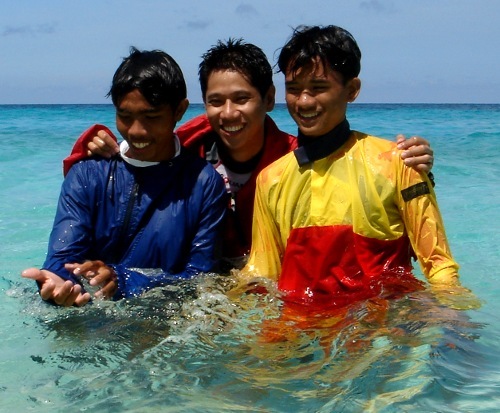Open Water Swimming
Open water swimming is a never ending adventure. It can be a bit daunting for new swimmers, but once you take the plunge, you'll be hooked.
There is a freedom and challenge to open water swimming which just can't be experienced in the pool. Besides that, open water swimming is good fun.
Lifestyle
A swimming lifestyle is an affordable activity, available to a wide variety of people and offers a great way to explore the coast. Open water swimming popularity has seen an exponential growth in the past years and we believe it will continue this way.
Open water swimming offers a great way to explore new places and the natural beauties. Your adventures may take you to the places that you would have probably never gone swimming by yourself. Make sure your trips are adventurous and safe at the same time.
Sea swimming can be unpredictably fascinating with the numerous varieties of marine life you are likely to rub shoulders with. Jellyfish are a likely occurrence and sea urchins are prevalent in rocky areas. Wear some comfy clothes and shoes to avoid these and stay warm.
Challenges
Open water swimming doesn’t have to be daunting. This sport’s been growing in popularity over the past decades. There are now thousands of events around the world, and all kinds of people are trying it.
Some folks see open water swimming as a challenge and pursue their dreams by achieving goals. Swim on and try our ideas to experience something different and fun. We believe you will remember your adventure swims for the rest of you life.
Many swimmers realize that enjoying themselves on vacation includes exercise.
After working out, they are in a better mood and have more energy.
The sun seems to shine brighter, food tastes better and beverages feel well-deserved.
No Black Lines
The pool is fine and predictable, but whether you’re training for a triathlon or looking to spice up your lap swimming, open water training could be for you. Plus, nearby lakes and the ocean are especially inviting in the summer.
While the conditions in open water are completely different than in a pool, the fundamentals of swimming are the same.
Open water swimming differs a lot from regular indoor swimming, not just because you would do it fully clothed for safety reasons, but as a multidiscipline sport, involving rock hopping, coasteering, and sometimes boats.
Getting away from following the black line at the pool bottom can reinvigorate your swimming. Plan some open water training before your adventure to get used to possible conditions you'll experience.

Route Planning
The challenges you face depend largely on the terrain. Pick an area you can easily reach as you may carry a fair amount of kit. Avoid disturbing local wildlife in the reed beds or other bushes along the water. Some of them can bite.
Before you launch yourself into the open water, familiarise yourself with the route you're about to take. Check out the entrance and exit points and make a mental note of any areas that you may need to avoid.
Do Your Research
High tide, low tide and currents are often posted online. There are thousands of lakes and bodies of water, but not all of them have information online. In that case, you need to ask around before you go into the water. You can contact the Coast Guard or the lifeboat station for details about conditions and safety.
First, ask a local. It doesn’t even have to be a swimmer, but someone who is familiar with the water: a fisherman, surfer, paddler. They’ll be able to tell you what the conditions are, where people usually swim and what might be dangerous. Sometimes, those dangers are animals, but more often it’s riptides or bacteria.
The biggest mistake you can make is simply seeing a body of water and jumping in.
That’s how you end up not knowing about dangerous riptides or animals who make their homes nearby.
After asking around, spend at least 10–15 minutes observing the conditions when you arrive.